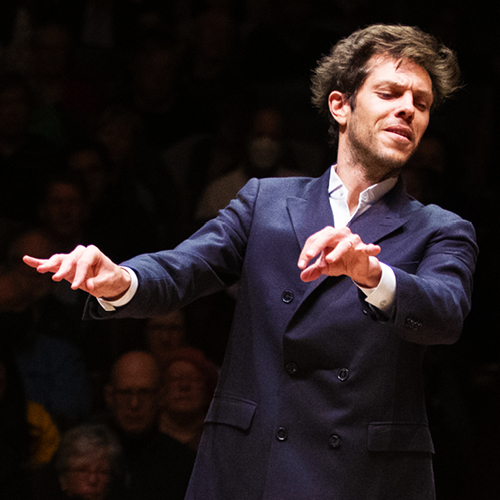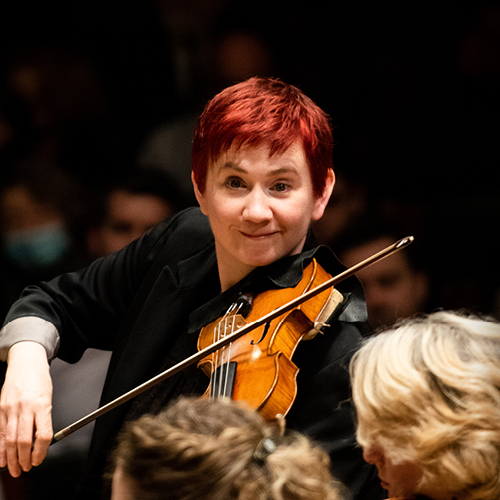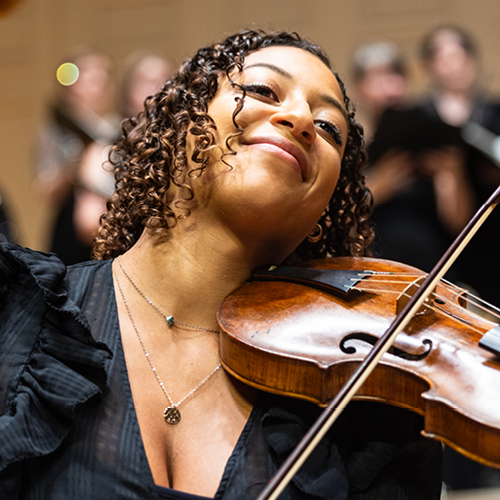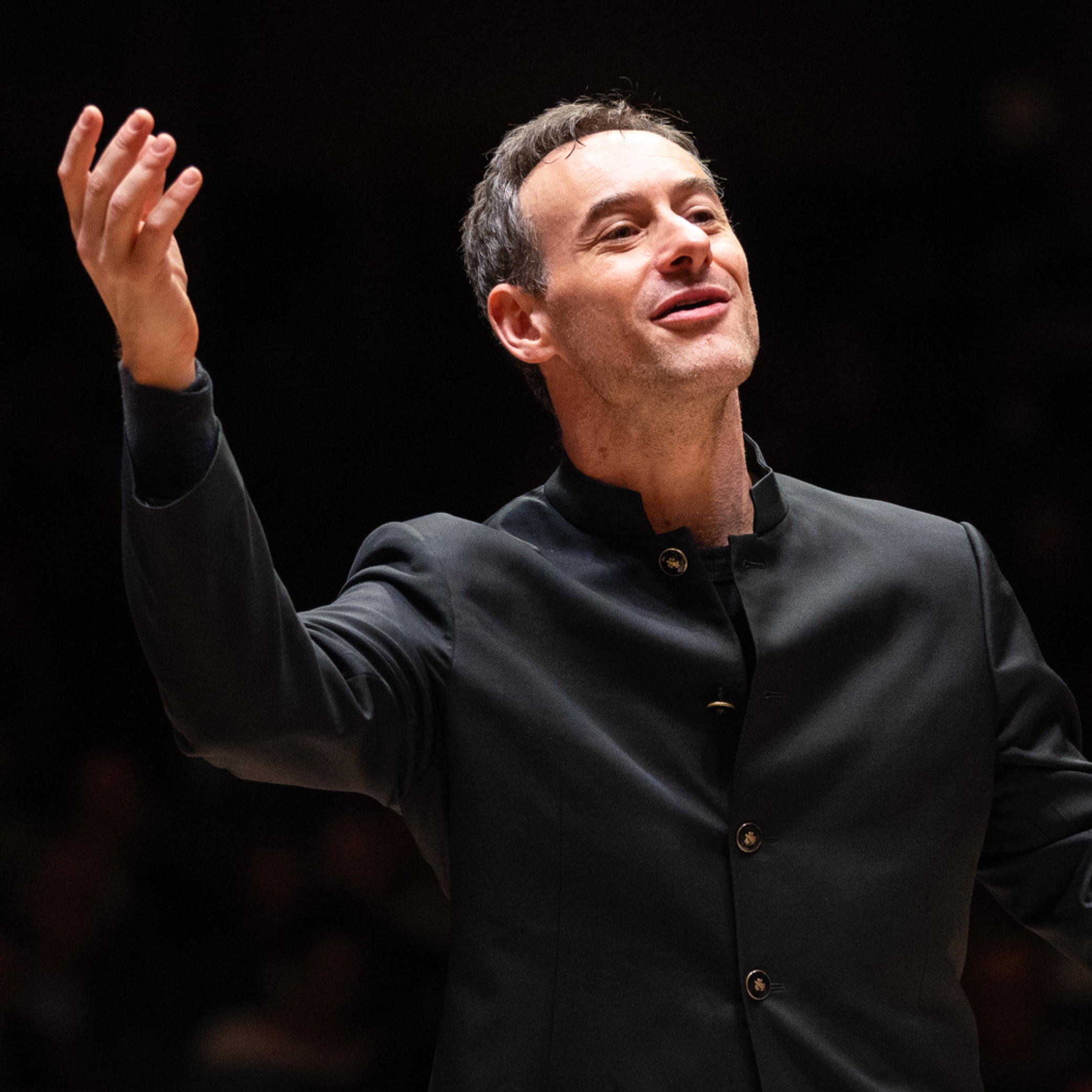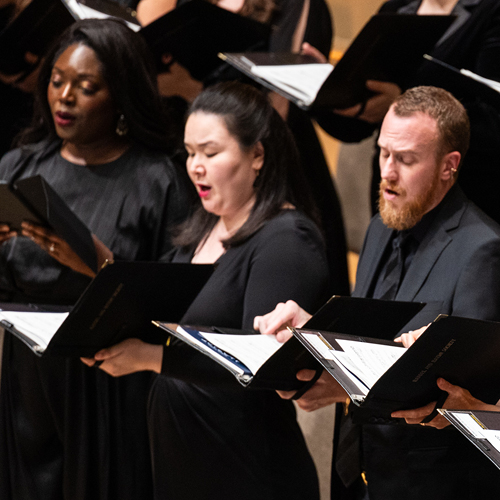What does “Chinese Baroque” music sound like? According to conductor and keyboardist Derek Tam and doctoral researcher and violinist Addi Liu (both experts in the field of early music), we don’t necessarily know—but it’s worth imagining. Their research focuses on musical exchanges and misunderstandings between Chinese and European people from the late 16th century to the early 19th century. In celebration of Asian American and Pacific Islander Heritage Month, we sat down with Derek and Addi to learn more about this fascinating project.
H+H: How do you define the “Chinese Baroque”?
Addi Liu: The concept of the Chinese Baroque started out as almost a joke. Derek and I were driving across the Golden Gate Bridge with a view of the Pacific Ocean, trying to brainstorm ideas for Baroque programs from unexpected locales, and we said, “How about Baroque music in China?” The next day, we did some cursory research and found that there were a lot of activities related to Baroque music in 17th- and 18th-century China. That’s what got us started down this rabbit hole.
What interests me are the misunderstandings, these failures of translation—some might even say an incommensurability between cultures. For me, the Chinese Baroque is generative as an imagined concept—something that we wish had existed, like the French Baroque or Italian Baroque. It’s playing on that idea: What would it be like? It’s also examining how people imagined music from faraway places to be, sometimes with very surprising results.
Derek Tam: We should clarify: The term “Baroque” itself was a backwards application as it is—composers at the time weren’t referring to their work that way—but we can see that there was music in 17th- and 18th-century Europe that had some common features. I don’t think the Chinese musicians at the time were thinking of themselves as part of that movement. There were so many traditions: in the courts, in various regions and provinces, folk traditions, vocal traditions, and more. They didn’t really care what was going on in Europe.
Our exploration is less about the Chinese Baroque as a defined genre and more about the limited musical contacts that Europeans and Chinese had during this time. It seemed like they were coming from two different planets. There’s that old trope that music is a universal language, but if so, they were definitely reading each other’s music through the lens of their own dialect.
H+H: What came out of those contacts? Did their musical styles influence each other in any way?
DT: If there are any influences between Chinese music and Western music, they’ve become much more present in the modern day. Of course, in Western classical art music, we have some wonderful and prominent composers of Chinese descent. But during the time period we’re looking at, mutual influence was limited and understanding was small. The Europeans tried to understand, but they could only hear Chinese music as a version of what they already knew. Addi, did you want to talk about Loum Kiqua?
AL: Yeah, Loum Kiqua [ca. 18th century] is one of the characters we explored. He was a Chinese merchant who traveled to Lisbon, survived the Great Lisbon Earthquake, and eventually made his way to London, where he played music for people eager to interact with someone who was actually from China. Someone by the initials A.B. reportedly listened to him play some tunes, and published a transcription. But that transcription sounds nothing like Chinese music! You would think it would at least be pentatonic, but it’s essentially just a jig in G Major. The instrument probably wasn’t even tuned in a European temperament, so the music probably couldn’t have been put into European notation without a lot of distortion.
How do you reckon with this apparent failure of listening? A.B. transformed the music into something completely different, and as a bonus, he even threw in a bassline with figured bass, which was completely fabricated. So it’s a late Baroque piece, but is it an example of the Chinese Baroque? I think it speaks more to that imaginary concept.
DT: It’s a really funny story. A.B. published that transcription in The Gentleman’s Magazine—the 18th-century version of GQ, I guess. What’s interesting is that, as Addi said, it’s like he wasn’t listening at all. He could have just sat in his room and written something, and it probably would’ve sounded similar to what he wrote down. But it’s important to note that in China, contact between Europeans and Chinese was really limited. There would have been some interaction at the merchant ports, and some at the court. Composers—primarily Jesuits—went to visit the Kangxi Emperor [1654–1722] and brought him all this musical knowledge shrouded in scientific garb.
AL: The Kangxi Emperor just happened to be really nerdy, and he enjoyed learning about tuning because it was rooted in mathematics. He had a great personal interest in the harpsichord and the pipe organ, and he seemed to be very knowledgeable about European music theory, which influenced his work with Chinese music theory. When he was interviewing new missionaries about music, he would always ask, “Do you know the old six-note system or the new seven-note system?” The old six-note system he was referring to was the really complicated hexachordal system. He was probably more knowledgeable about Renaissance music theory than most musicians studying at conservatory today.
DT: But he didn’t learn modern keyboard technique. He took one finger and tried to play the melody of The Incantation of the Monk Pu’an, which is traditionally played on a qin—what would you call that in English, Addi?
AL: It’s like a Chinese zither.
DT: Yeah, so he played it out one note at a time, and that was the height of interaction you had. Meanwhile, European Jesuits in China were composing pieces you could probably hear in Europe—plain old masses and sonatas that could have been written in Italy at the same time. They weren’t really trying to incorporate Chinese music. The Chinese people in the court didn’t have much to say about it. One Jesuit, [Jean Joseph Marie] Amiot [1718–93] wrote about how the European missionaries had brought a piece by Rameau—Les Sauvages, which was maybe a little on the nose—and according to him, the court officials “replied as politely as they possibly could that, ‘Our songs are not made for their ears, nor their ears for our songs.’” In other words: Let’s agree to disagree.
Years earlier, though, there was one possible exception: Matteo Ricci [1552–1610], who was one of the first Jesuits to go to China, wrote poetry and set it to tunes. We don’t know what tunes he used, though some people have tried to reimagine them. But that might have been the only true interaction like that in China, and it was around the turn of the 17th century. In Europe, people who had traveled to China would try to bring music back, but it was always secondhand knowledge. Unlike with visual art or porcelain, you can’t just bring music over. Instead, they would try to translate it into European terms: “They have a harpsichord-like instrument!”
AL: Besides, most of the missionaries never came back: They went to China and died there.
DT: The Macartney Mission, a trade expedition from England to the Chinese court in 1793, gives us the first major example of Chinese music going to Europe. They brought back two pieces, one of which we actually recognize: “The Jasmine Flower Song,” which was used by Puccini a century later. They were pretty close! It was published in London in 1796, along with the other piece, a random boating song. In addition to the original version of each song, they printed another version which was supposedly more agreeable to the English ear. They were getting closer, but it was still rife with misunderstandings.
H+H: What are some of the major differences between Western classical music and Chinese classical music that contributed to these misunderstandings?
AL: What stands out most is that much of Chinese music does not use the idea of polyphony. Instead, you’d all play the same tune with individual ornamentations. That’s what we call heterophony. In Western music from the common-practice period, on the other hand, it was expected that you’d have a bassline. When Bach wrote the sonatas and partitas for solo violin, he had to clarify “senza basso,” or without bass, to tell the musician, “There isn’t a bassline missing: This is what you’re seeing.” To a Chinese person, I imagine European music sounded like cacophony on first hearing it—why are there multiple voices happening at the same time? Conversely, timbral differences might have contributed to Europeans describing Chinese music as “howls” or just “noise.”
H+H: Are there any known compositions that would fall into the mostly imagined category of the Chinese Baroque?
AL: Teodorico Pedrini [1671–1746] composed some sonatas in China—the only Western-style sonatas written in China during this period to have survived. Pedrini had violin training and was undoubtedly within the orbit of [Arcangelo] Corelli [1653–1713] in the 1690s. So when the Kangxi Emperor requested a music specialist, the pope sent him to China. It wasn’t his choice! He ended up spending a lot of his time tuning harpsichords, as well as helping the emperor with a music treatise he was working on, but he also left behind a manuscript of 12 sonatas for violin and basso continuo.
We don’t know what they were written for, and there’s no evidence that they were ever performed. The manuscript lacks a lot of the finger marks and wax droppings that we see in other books that were used frequently. But I’d like to think that it was heard by someone in Beijing. That’s something that interests me a lot. Even with these real compositions, we’re still playing with the idea of imagining what might have happened to them.
DT: They’re interesting because Pedrini’s life story was really interesting, but a lot of composers were writing sonatas just like these: He just happened to write them far from home during a fascinating chapter in world history.
H+H: What do you wish Western-style classical music fans in the United States knew about the Chinese Baroque, or about Chinese classical music in general?
DT: We’re in a day and age when we often talk at each other, rather than in dialogue. That whole theme of “talking at” as opposed to “talking with” is at the core of our work: As we’ve been discussing, it can be really hard to understand another culture’s music. In order to appreciate it, we need to be aware of our own biases. There’s so much we think we know but actually don’t. Hopefully our programs based on the idea of the Chinese Baroque are a reminder to stay in dialogue, and a celebration of the fruits of that labor. There’s such a rich legacy of Chinese music to explore, music that’s just as worthy as the music you might already know and love. I would encourage everyone to go to concerts, learn more, and broaden their horizons.
AL: I hope musicians today are inspired by these imaginative endeavors—not necessarily to plainly reproduce music from surviving musical notations, but to envision how different musical elements might come together. That could generate something more creative than just a replication of the music from this time. How might different instruments or tuning systems transform some of these pieces? What kinds of music could have been possible? Those are the questions that keep me interested in the concept of the Chinese Baroque.
H+H: Do you have any upcoming projects you’d like to tell our readers about?
AL: I’m working on two projects, both somehow hand-related. The first is an iconographic database of bow holds for the violin and adjacent instruments, with the goal of recovering ways of holding the bow that might have been common but are now forgotten. A point of similarity (or coincidence) across the East-West divide, for instance: This Japanese painting “Benten (Goddess of Love),” attributed to the Hokusai school, shows an underhand bow hold similar to this chalk drawing of a “Seated Man Playing a Viola d’Amore,” attributed to the Rubens school. What common thread of performance practice or genealogy can we draw from these two images? I’m working on putting out a public version of this database in the near future.
A second project revolves around the Guidonian hand and hand mnemonics depicted in European, American, and Chinese sources, such as this Chinese Guidonian hand discussed by Lester Hu. The Guidonian hand is an interesting cross-cultural case study of pointing and grid making on the hand, with roots from ancient traditions, and I hope to further articulate the idea of the hand as an instrument that may contribute to current discussions toward a study of music theory in a global framework.
DT: My day-to-day work is focused on leading the San Francisco Early Music Society. As part of that, I have the wonderful opportunity to serve as the artistic director of the biennial Berkeley Festival & Exhibition—the “sister” festival, so to speak, of Boston Early Music Festival—so I invite folks to come to the wonderful Bay Area in June 2024 for a superb week of music!

